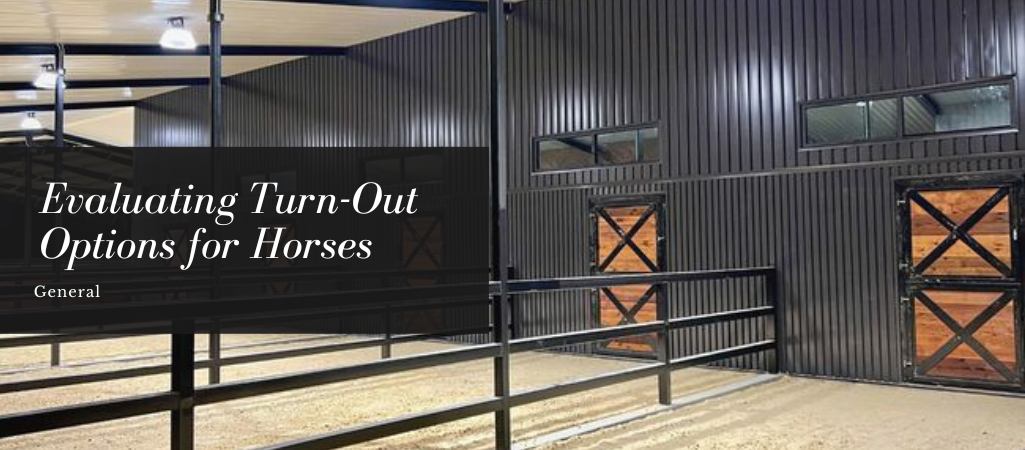When it comes to thinking about turn-out options for horses, there are a lot of opinions about what is best practice. Views on turnout are often strongly affected by what activities you pursue with your equine companion. A show horse is going to be living a different lifestyle from a retired pasture pet. Similarly, the amount of acreage can also have a big impact on space available to devote to turnout. Here are some turn out options to consider when designing your perfect horse property.
Horse Stall Runs: Stall Runs are a great way to give your horse a little extra room and some fresh air. This style of turnout space is directly attached to the horse’s stall for ease of turnout. Often these runs are at least partially covered and are typically the width of the stall but can be as long as space allows for extra movement. They are great for all season turnout but can be especially helpful in the winter months when larger lots may be too muddy. Because of the small size, the fencing is recommended to be taller and more substantial than what is needed in a larger pasture. The area also needs to be maintained with frequent cleaning and ground improvements to prevent mud are a great idea.

Paddocks: If your horse needs a little more room to move and some socialization, paddocks can be a great turnout space. These areas are typically larger than a horse stall run, but still located near the barn. While there is no specific size requirement, they are a great spot to turnout for horses that might need additional monitoring while out or need to be accessible for work/riding. Because it is still a smaller space and often shared with a herd mate, the fence should be a safe and highly visible barrier. The ground of the paddock may be grass or it can be improved to an all-weather option to help prevent mud. This type of turnout is helpful when managing properties with smaller acreage.
Pasture: When it comes to larger pasture turn out, it is usually recommended to have one acre/horse ratio to meet grazing needs on maintained pastures. If horses are put on unmaintained pastures, they would need around 10 acres per horse for grazing to remain sustainable. Utilizing rotational grazing in large pastures is considered a best practice for maintaining optimal grazing throughout the seasons. While the fencing doesn’t have to be as substantial as in smaller spaces, it should be horse be safe and checked regularly to make sure that there are no areas where horses can get out. Horses that spend most of their time in the pasture will also need shelter from the hot sun or cold winds.

Track Systems: Track systems utilize a double fence, creating a parameter track that the horse moves around. They are motivated to keep moving based on strategically placed areas for water, feed, and shelter as well as other enrichment stations that mimic a natural environment. The interior of the track can then be utilized for rotational grazing. This is a great way to manage a smaller acreage property while still giving a horse a turnout opportunity that encourages movement.
When thinking about creating turn-out spaces for your horse barn, it is a great idea to consider all the options and determine what will work best for your facility. Generally, having access to a couple different turnout options is a great way to manage horse properties. If you are considering your next barn and turnout project, contact American Stalls for more information at americanstalls.com





